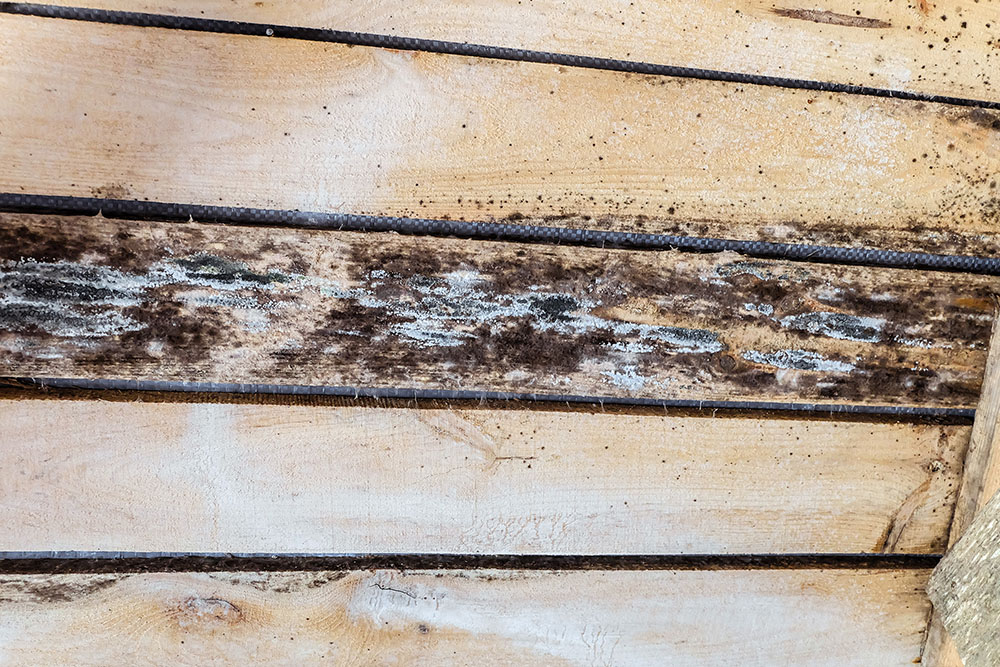How To Prevent Mould On Wood Furniture

CONTENTS
- The importance of preventing mould on wood furniture
- Comprehensive cleaning as a preventive measure
- Humidity control is a key factor in mould prevention
- Ventilation control in mould prevention
- Proper positioning to avoid mould growth on wood furniture
- Advanced strategies for combating mould on wood
- Frequently asked questions
- Get in touch
A discolouration on your wooden chairs or tables could be the beginning of a destructive mould infestation. With good ventilation and humidity, you can avoid this issue altogether, but once mould starts, it is difficult to eliminate.
At ICE Cleaning, we offer innovative mould remediation solutions for all surfaces across your property. Our experts can identify the root cause and provide professional guidance to help you prevent its return in the future.
Read on to learn more about effective mould prevention for your wooden furniture and how to manage humidity levels in your home.
The importance of preventing mould on wood furniture
Mould, a fungus that thrives in damp conditions, can be detrimental to wooden furniture. Not only does it tarnish the aesthetic appeal, but mould also compromises the integrity and longevity of wood. Once mould and its spores embed into the material, getting rid of it is quite a challenge.
The appearance of mildew might not seem much at first glance, and you may have difficulty identifying it. However, if you leave it unchecked or fail to investigate further, there is a chance the mould could spread and lead to decay and loss.
Preventing mould growth is essential for maintaining the condition and prolonging the lifespan of wooden items.
Comprehensive cleaning as a preventive measure
Regular cleaning is vital to prevent mould growth on wooden furniture. By removing dust and moisture, you can create an environment that's less favourable for mould spores.
You must give your wood items a thorough clean at least once every two weeks. A combination of warm water and a soft washing-up liquid should suffice, but some treated wood surfaces will require specialist cleaners.
Drying is just as important; leaving any dampness behind could allow more mould to settle. So, you must wipe off all excess water with a dry cloth after washing your wooden pieces.
Besides routine cleaning, consider applying specially formulated mould inhibitors. These products provide additional protection by creating a barrier against fungal invasion on your beloved timber furnishings.
Humidity control is a key factor in mould prevention
Maintaining the right humidity level is essential to prevent mould growth on wooden furniture. Excess moisture in the air creates an environment for mould spores to proliferate.
A simple yet effective strategy is using humidity control or tracking devices like dehumidifiers or hygrometers. These tools help keep indoor humidity within the recommended 30-50% range. This not only helps protect your wood from damage but also creates a healthier living space.
In addition, investing in hygrometers gives you real-time readings about your home's moisture levels. You will know when it is time to adjust settings or even move wooden pieces away from overly damp areas.
Do not forget that proper ventilation aids in controlling humidity. By ensuring good airflow, you can reduce excessive moisture, which may prevent mould formation on wood.
Ventilation control in mould prevention
Proper ventilation plays a crucial role in preventing mould growth on wood. It helps to reduce indoor humidity levels, which can otherwise foster an environment conducive to mould development.
Adequate airflow allows your wooden furniture to breathe and stay dry, limiting the conditions that encourage mould formation.
Implementing mould prevention measures, such as using extractor fans or dehumidifiers, particularly in damp-prone areas like bathrooms or kitchens, can help maintain healthy air circulation.
Regularly opening windows also promotes good ventilation by allowing fresh outdoor air to replace stagnant indoor air. But be mindful of external weather conditions – avoid doing so during rainy or humid days because this could inadvertently introduce more moisture into your home.
Proper positioning to avoid mould growth on wood furniture
The correct placement of wooden furniture can play a significant role in mould prevention. Spaces with high moisture, such as bathrooms or kitchens, should be avoided when placing your wood items.
Furniture placed against walls may also invite mould growth due to limited air circulation and potential dampness. You should allow some distance between the wall and your pieces for better airflow.
Direct sunlight exposure is another factor that might influence mould formation on wood. It is best not to place furniture under windows where it could get wet from condensation or rain penetration. Damp conditions are an environment perfect for fungal infestation.
Besides strategic positioning, using mould-resistant finishes on your wooden belongings will add more protection against unwanted spores. This way you will maintain their aesthetic appeal and extend their lifespan significantly.
Advanced strategies for combating mould on wood
Mould-resistant coatings
One tactic involves using mould-resistant coatings. These products form a protective layer on your wooden furniture, effectively shielding it from moisture and preventing mould growth.
Sophisticated cleaning solutions
Beyond standard cleaning methods, there are powerful solutions to fix stubborn mould issues. Specialised wood cleaners contain ingredients that not only clean but also help maintain the integrity of wood surfaces.
Avoid direct sunlight exposure
You might think sunlight kills all germs; however, too much exposure can cause damage to your furniture over time. Keeping items out of direct sunlight will reduce this risk while still allowing natural light to deter potential mould growth.
If mould has started to grow on your wooden furniture despite these steps, you must seek help from a mould removal company. Experts can offer proper mould removal services and ensure the mould does not cause further destruction.
Frequently asked questions
Is mould on wood safe?
Mould on wood is not generally safe. It can lead to allergic reactions and respiratory issues, and it also harms the wood.
What happens if wood gets mouldy?
If untreated, mouldy wood decays over time. The structure weakens and loses its aesthetic appeal due to discolouration.
Does bleach kill mould on wood?
Bleach can kill surface-level mould but does not penetrate the porous material of the wood effectively enough to remove all traces of it. Bleach is also dangerous, as inhaling vapours or touching it can cause negative reactions.
Does mould on wood spread?
If left unchecked, spores from a small patch of mould will propagate through air currents and contaminate other areas too.
Get in touch
Our mould cleaning services are paving the way for mould prevention in the UK. We offer our services to homeowners, business owners, and tenants nationwide. Our professionals can be on-site within a few hours of your first call, tackling mould at the source and helping you prevent its return.
To learn more about our services, you can speak to one of our friendly customer service providers at 0208 066 0360 or enquiries@icecleaning.co.uk. No matter where you are in the UK, we will assist you with our best equipment and solutions, ensuring high-quality results.

Speak with me today,
I’m here to help
By asking you a few questions either via phone or email I can immediately provide a realistic estimation of the cost.
You’re in good company. We’ve cleaned for the following commercial clients… View all

Why choose us?
- Cater to a wide variety of cleaning situations
- Nationwide coverage, available 24/7
- Cater to commercial and domestic clients
- Free survey provided prior to quotation
- Emergency response team
- Offer a bespoke service designed to suit all your needs
- All technicians hold professional health and safety qualifications, including BICSc, IOSH, Dewpoint Professional & Safe Contractor
We’re fully accredited
We place best practise, professional expertise and health and safety at the core of our business. We’re fully compliant with all legal obligations. You can view a list of our accreditations below, or visit our Health & Safety page for more information.











-RGB-small.1707319151.jpg)




















